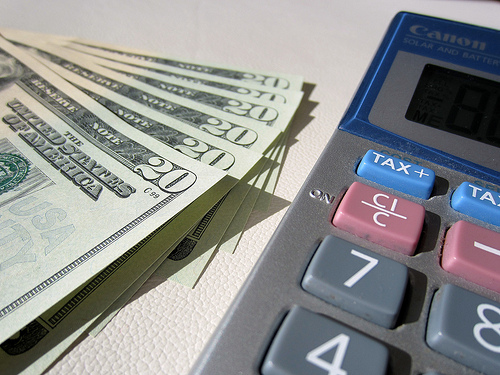Drafting a budget and sticking to it is the single best thing you can do for your personal finances. So why is it so hard for so many people?
One reason people drag their feet when it comes to budgeting is that they think it’s difficult. It’s complicated, you tell yourself, and it will just make me feel bad about yourself, so why bother?
Well, I’m here to tell you that budgeting is easy. It’s one of the easiest things to get your head around, but you have to stop thinking of it as a chore to be avoided. It’s actually the one thing that will set you free from financial bondage, and it’s amazingly simple to do.
So let’s get started with the basics – Budgeting 101.
Where to start: 5 Steps to Begin Your Budget
Budgeting can be summed up in a single sentence: tracking money that comes out and tracking money that comes in.
That’s really all you’re doing. You take a look at the money your family earns, and you take a look at the money your family spends, and you adjust the spending column so that you don’t end up spending more than you earn.
Which brings us to step one of easy budgeting:
1. Track total income
This is probably the easiest, and so we’ve put it first on our list. For most people, all you have to do is look at monthly salary or wages. If you have fluctuating income (maybe you do freelance or seasonal work), then you might have to do a little estimating. In that case, look at what you’ve made over the past 6 months to a year, and average your earnings.
2. Record your fixed expenses
Create a column next to your total income where you’ll write down your fixed expenses. These are the bills/expenses that are the same every month, no matter what. It will probably include your mortgage or rent payment, utility bills, insurance bills, cable, etc.
3. Record your variable expenses
Finally, create a third column where you’ll track your variable expenses. This is basically everything else that isn’t a fixed expense. Typical categories include entertainment, clothing, vacations, eating out, etc.
Your variable expenses are where you have the greatest opportunity to put your budget to work. Since fixed expenses are – by nature – inflexible and unlikely to change, your variable expenses are where you’ll do the most pruning.
4. Track at least 3 months’ worth of expenses
Since your variable expenses change from month to month, gather at least 3 months worth of expenses and add it up. Calculate the average of your variable expenses for those months, and add that number to your fixed expenses. Voila: now you know how much you spend each month, on average. Is this number greater, or smaller, than your total income?
If you’re spending more money than you’re bringing in, then it’s time to get to work cutting some of the expenses.
5. Separate your wants from your needs
In your variable expenses column, label each expense as a “want” or a “need.” Needs are the expenses you cannot go without: think anything that has to do with shelter, food, and health. Your wants are the things that you will be able to cut back on without stressing out your life too much.
Warning: Don’t make budgeting too complicated
While separating out wants and needs, don’t fret too much about which category an expense should fall under. The more complicated you make your budget, the less likely you’ll be able to stick to it. Just because an expense is a “want” doesn’t mean you have to eliminate it completely; it just means it’s an opportunity to cut back.
In next week’s blog post we’ll go over more of the nuts and bolts of actually creating a working budget for your family. In the meantime, check out our credit repair tips and tricks page, or tell your budgeting story in the comment section below.
photo credit: Accounting via photopin (license)


Recent Comments